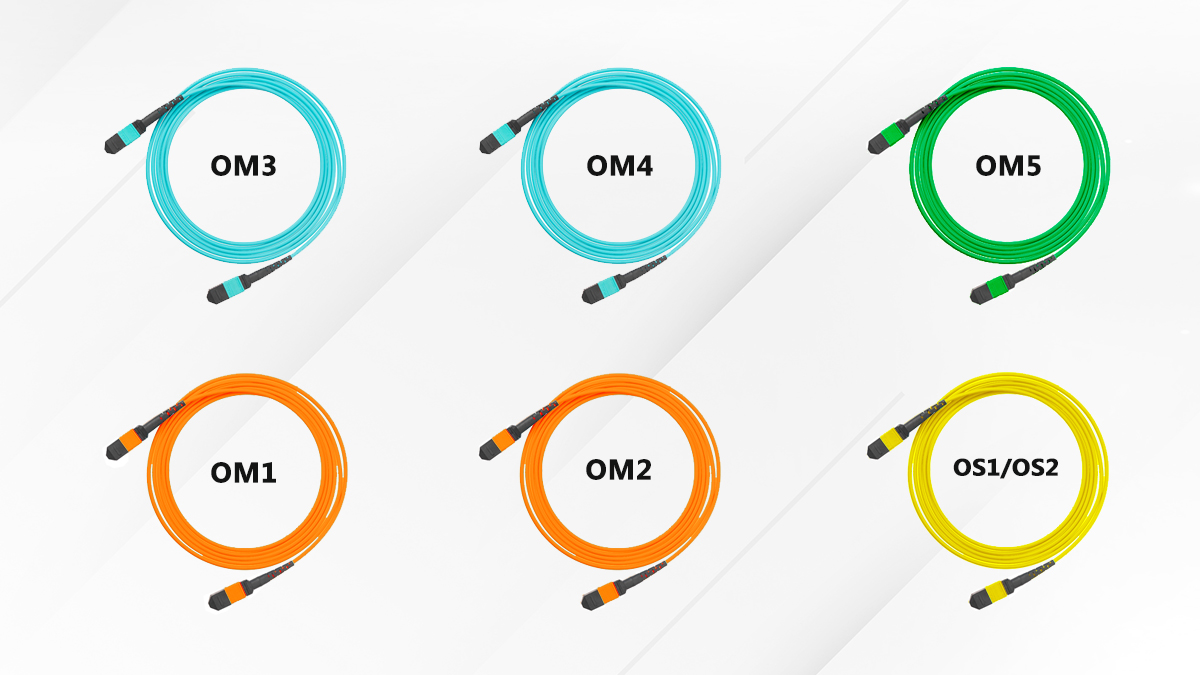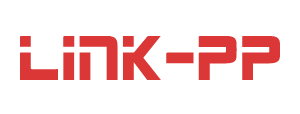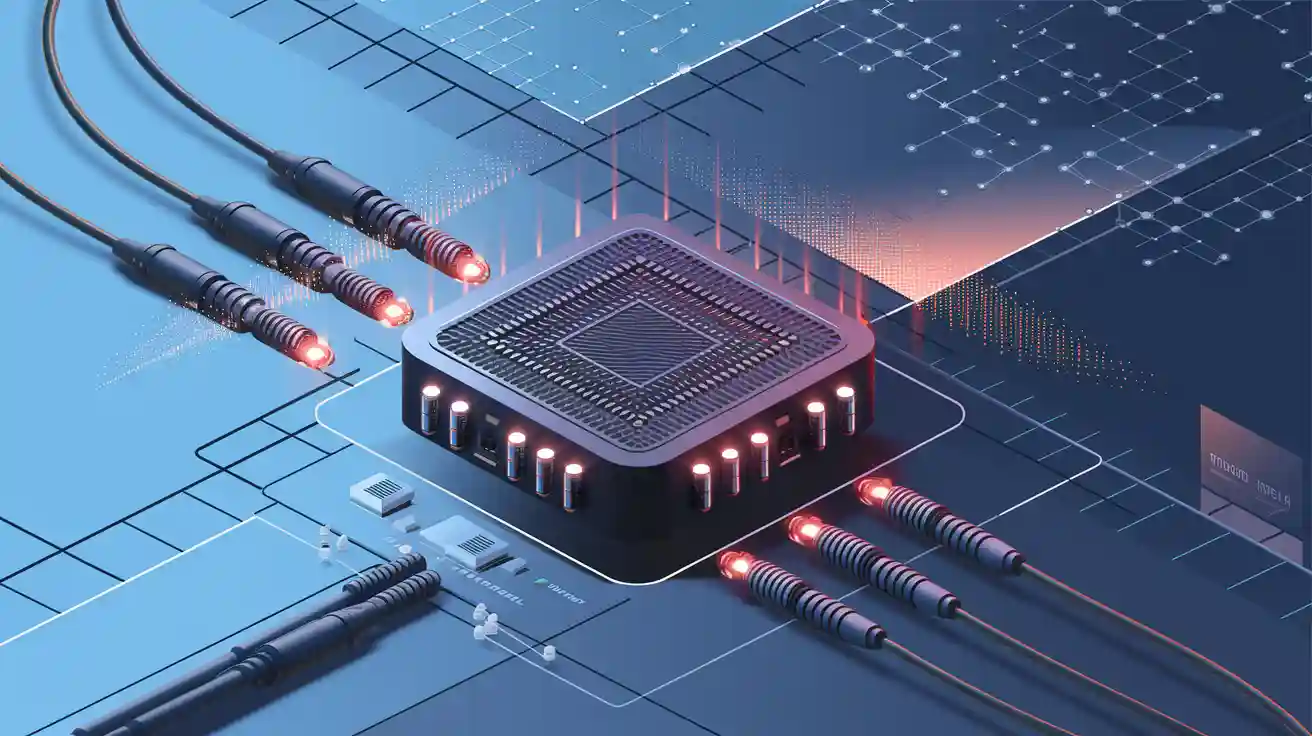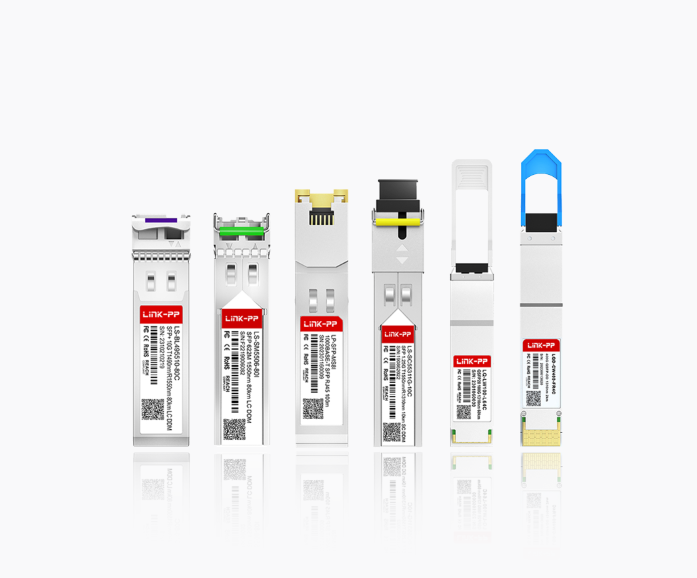
Multimode optical fiber plays a crucial role in modern networking. Among its types, OM1 to OM5 fibers differ significantly in performance and applications. For example, OM1 supports a 1Gbps speed with a 275MHz bandwidth, while OM5 handles 100Gbps with a 2GHz bandwidth. OM3 and OM4 stand out for their suitability in data centers, supporting 10Gbps over 300 and 400 meters, respectively. OM5, optimized for high-density environments, supports multiple wavelengths and is ideal for 100Gbps and 400Gbps networks.
Understanding these differences helps you choose the right multimode fiber. Picking the wrong type can limit your network's efficiency or future scalability. By knowing the capabilities of each fiber, you ensure your network meets current demands and adapts to future needs.
Key Takeaways
Multimode fibers OM1 to OM5 vary in speed and data capacity. OM1 works at 1 Gbps, but OM5 handles up to 400Gbps. Pick the fiber based on your network's needs.
Core size and jacket color help identify fiber types. OM1 and OM2 have orange jackets. OM3 and OM4 are aqua, and OM5 is lime green.
Use OM3, OM4, or OM5 for faster connections. They work better over long distances, perfect for data centers.
Think about how far your network needs to reach. OM1 and OM2 are good for short distances. OM3, OM4, and OM5 are better for longer ones.
Plan for the future by choosing OM4 or OM5 fibers. They support new technologies and grow with your network's needs.
Understanding Multimode Fiber
Multimode optical fiber is a type of optical fiber designed for short-distance data transmission. It has a larger core diameter, typically ranging from 50 to 100 micrometers, which allows multiple light rays, or modes, to travel through it simultaneously. This design makes multimode fiber ideal for applications requiring high data rates over short distances, such as within buildings or campus networks.
The larger core size of multimode fiber enables it to carry more light compared to single-mode fiber. This feature supports the use of inexpensive LED light sources, making it a cost-effective solution for many networking needs. However, the simultaneous propagation of multiple light modes can lead to modal dispersion, which limits its transmission distance and bandwidth compared to single-mode fibers. Despite this limitation, multimode fiber remains a popular choice for high-speed networks due to its efficiency and affordability.

Multimode vs. Single-Mode Fiber (SMF): A Quick Comparison
Characteristic | Multimode Fiber (OM1-OM5) | Single-Mode Fiber (OS1/OS2) |
|---|---|---|
Core Diameter | Larger (50µm or 62.5µm) | Smaller (9µm) |
Light Paths | Multiple Modes | Single Mode |
Bandwidth | Lower (Up to 28,000 MHz·km for OM5) | Very High (Effectively Unlimited) |
Transmission Distance | Shorter (Typically up to 550m for 10G) | Very Long (Kilometers) |
Light Source | LED (OM1/OM2) or VCSEL Laser (OM3+) | Laser Diode |
Cost (Cable & Transceivers) | Lower | Higher |
Primary Use Case | Short Reach (Data Centers, Buildings) | Long Haul (Telecom, MAN, Campus) |
MMF Advantages for Short Reach:
Lower System Cost: Optical transceivers (like SFP+, QSFP28) for MMF are significantly cheaper than SMF variants. LINK-PP offers a wide range of cost-effective MMF transceivers.
Easier Installation & Maintenance: The larger core makes connector termination simpler and alignment tolerances less critical.
Sufficient Reach: MMF easily covers the vast majority of intra-building and data center interconnect distances.
Multi-User Backbone: Efficiently carries multiple signals simultaneously with minimal power loss.
Protocol Support: Ideal for core applications using Ethernet, InfiniBand, and Internet protocols.
Core Distinctions: Physical & Application Differences
The primary differences between OM1 through OM5 fibers lie in their physical construction and resulting application performance:
1. Physical Differences
Fiber Type | Core/Cladding Diameter | Jacket Color | Light Source | Bandwidth (850nm) |
|---|---|---|---|---|
OM1 | 62.5/125 µm | Orange | LED | 200 MHz·km |
OM2 | 50/125 µm | Orange | LED | 500 MHz·km |
OM3 | 50/125 µm | Aqua | VCSEL (Laser) | 2000 MHz·km |
OM4 | 50/125 µm | Aqua | VCSEL (Laser) | 4700 MHz·km |
OM5 | 50/125 µm | Lime Green | VCSEL (Laser) SWDM | 28000 MHz·km* |
*OM5 bandwidth is specified for Short Wavelength Division Multiplexing (SWDM) using wavelength 850nm, 880nm, 910nm and 940nm.
Key Evolution:
Core Size: OM1 uses a larger 62.5µm core; OM2-OM5 use a more efficient 50µm core, reducing modal dispersion.
Light Source: OM1/OM2 rely on LEDs. OM3 onwards are laser-optimized (LOMMF) for use with Vertical-Cavity Surface-Emitting Lasers (VCSELs), enabling higher speeds.
Bandwidth: Significant increases from OM1 (200 MHz·km) to OM5 (28,000 MHz·km for SWDM), directly impacting supported speed and distance.
2. Application Differences: Speed & Reach
The most practical difference is how far each fiber type can reliably transmit data at various Ethernet speeds:
Fiber Type | Fast Ethernet (100M) | 1GbE | 10GbE | 40GbE/100GbE (BiDi/Parallel) |
|---|---|---|---|---|
OM1 | 2 km | 275 m | 33 m | Not Supported |
OM2 | 2 km | 550 m | 82 m | Not Supported |
OM3 | 2 km | 550 m | 300 m | 100 m |
OM4 | 2 km | 550 m | 550 m | 150 m |
OM5 | / | / | 550 m | 150 m (100G-SWDM4) /440 m (40G-SWDM4) |
Critical Takeaways:
Legacy Use (OM1/OM2): Primarily for 1Gbps or lower speeds within racks or very short links. Avoid for new 10G+ deployments.
10G Workhorse (OM3/OM4): OM3 offers a cost-effective 10G solution up to 300m. OM4 extends 10G reach to 550m and is the baseline for 40G/100G using parallel optics (like LINK-PP LQ-M8540-SR4C) up to 150m.
Future-Proof (OM5): Designed for wavelength division multiplexing (WDM) techniques like SWDM4 and BiDi. OM5 uses fewer fibers to achieve 40G/100G/400G over longer distances than OM4 (e.g., 440m for 40G-SWDM4 vs. 150m for parallel optics). It’s backward compatible with OM4.
Choosing the Right Multimode Fiber
Legacy Networks (1G): OM1 or OM2 might suffice but consider future needs.
New 10G Deployments: OM3 offers good value for links ≤ 300m. OM4 is recommended for links up to 550m or if future 40G/100G is possible.
New 40G/100G/400G Deployments (Especially Greenfield): OM4 is the current mainstream minimum. OM5 is the strategic, future-proof choice, especially for distances beyond 150m or where reducing fiber count is critical. OM5 maximizes the lifespan of your cabling investment.
Multimode Fiber Trends & The Future is OM5
The demand for higher speeds (100G, 400G, 800G) within data centers is relentless. MMF is evolving towards lower loss, higher bandwidth, and multi-wavelength techniques like SWDM and BiDi.
OM1/OM2: Primarily legacy, used for 1G within equipment rooms.
OM3/OM4: Dominant for 10G/40G/100G data center cabling using parallel optics. OM4 is the current mainstream choice for new deployments needing 40G/100G up to 150m.
OM5: Represents the future. Its key advantage is using fewer fibers to achieve high speeds (40G/100G/400G) over longer distances than OM4 by leveraging SWDM/BiDi. It offers superior scalability and flexibility, reducing fiber count requirements. While costs are currently higher than OM4, the reduction in required fibers and associated transceivers (like BiDi optical transceivers) offers a compelling total cost of ownership (TCO), especially for future upgrades. OM5 is poised to be the backbone for 100G, 400G, and even 1TbE in mega data centers.
Conclusion
Understanding the differences between OM1, OM2, OM3, OM4, and OM5 multimode fibers is essential for optimizing your network. Each fiber type offers unique features, such as core size, bandwidth, and distance capabilities, tailored to specific applications. For example, OM1 suits legacy systems, while OM5 excels in high-density environments with advanced technologies like shortwave wavelength division multiplexing (SWDM).
Choosing the right multimode fiber ensures your network performs efficiently and adapts to future demands. For small-scale networks, OM1 or OM2 may suffice. For data centers or enterprise networks, OM3 and OM4 provide reliable high-speed connectivity. OM5 is ideal for next-generation infrastructure, supporting technologies like 5G and IoT.
The future of multimode fiber technology looks promising. The market is projected to grow significantly, driven by the demand for faster, more reliable communication networks. Innovations in multimode fiber will support emerging needs like smart cities, IoT, and cloud computing, ensuring robust and scalable solutions for global connectivity.
FAQ
What is the main difference between OM1 and OM5 fibers?
OM1 has a larger core size (62.5 microns) and supports lower data rates, making it suitable for legacy systems. OM5, with a 50-micron core, supports higher speeds and multiple wavelengths, making it ideal for modern, high-density networks.
Can you mix different OM fiber types in one network?
You should avoid mixing OM fiber types. Each type has unique performance characteristics, such as bandwidth and distance capabilities. Mixing them can lead to signal loss and reduced efficiency. Always match the fiber type to your network's requirements.
How do you identify OM fiber types during installation?
You can identify OM fibers by their jacket colors. OM1 and OM2 are orange, OM3 and OM4 are aqua, and OM5 is lime green. Checking the core size and labeling also helps ensure compatibility.
Is OM5 fiber backward compatible with OM3 and OM4?
Yes, OM5 is backward compatible with OM3 and OM4. It supports the same applications but adds advanced features like shortwave wavelength division multiplexing (SWDM) for higher efficiency in high-speed networks.
When should you choose OM4 over OM3?
Choose OM4 if your network requires longer distances or higher speeds. OM4 supports 10 Gbps over 550 meters, while OM3 supports the same speed over 300 meters. OM4 also offers better future-proofing for advanced applications.
Tip: Always evaluate your network's speed and distance needs before selecting a fiber type.
See Also
The Importance Of Digital Monitoring In Optical Transceivers Explained
Exploring TOSA's Role In Optical Modules And Its Significance




